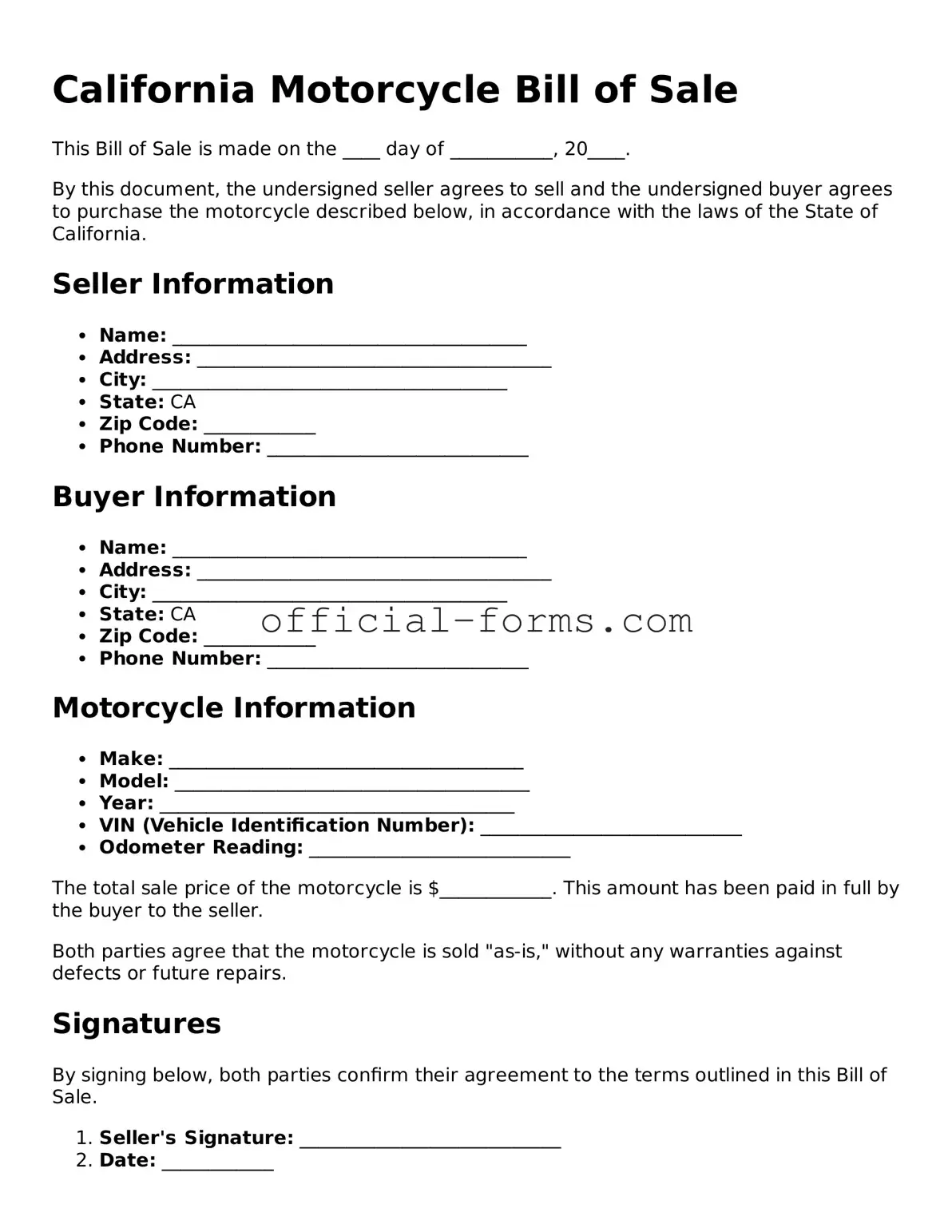Filling out the California Motorcycle Bill of Sale form is an important step in the process of buying or selling a motorcycle. However, many individuals make common mistakes that can lead to confusion or legal issues down the line. Understanding these pitfalls can help ensure a smoother transaction.
One frequent error occurs when the seller's information is incomplete or inaccurate. It is crucial to provide the full name, address, and contact details of the seller. Omitting any of this information can create problems if any disputes arise later. Buyers need to know exactly who they are dealing with, and accurate details help establish trust.
Another mistake involves the description of the motorcycle. Sellers often neglect to include essential details such as the make, model, year, and Vehicle Identification Number (VIN). This information is vital for identifying the motorcycle and ensuring that the buyer is getting exactly what they expect. A vague description can lead to misunderstandings and potential legal issues.
People also tend to overlook the importance of signatures. Both the buyer and seller must sign the bill of sale for it to be valid. Failing to obtain the necessary signatures can render the document ineffective, leaving both parties vulnerable in case of disputes. It is essential to double-check that all required signatures are present before finalizing the transaction.
Another common oversight is not including the sale price. This detail is crucial not only for the transaction itself but also for tax purposes. The sale price should reflect the agreed-upon amount, and both parties should agree on this figure to avoid future disagreements. Leaving this section blank can lead to confusion and complications later.
Some individuals make the mistake of not providing a date on the bill of sale. The date is important as it marks when the transaction took place. Without a date, it becomes challenging to establish timelines for registration or any potential disputes. Always ensure that the date is clearly indicated on the form.
Additionally, individuals sometimes fail to include any additional terms or conditions that were agreed upon during the sale. If there are warranties, guarantees, or specific agreements about the motorcycle's condition, these should be documented in the bill of sale. This clarity can prevent misunderstandings and protect both parties in the future.
Finally, many people forget to keep a copy of the bill of sale for their records. It is important for both the buyer and seller to retain a copy of this document. This serves as proof of the transaction and can be invaluable if any issues arise later. Always make sure to file away a copy in a safe place.
By being aware of these common mistakes, individuals can fill out the California Motorcycle Bill of Sale form more accurately. Taking the time to ensure all information is complete and correct will lead to a smoother transaction and help avoid complications in the future.
